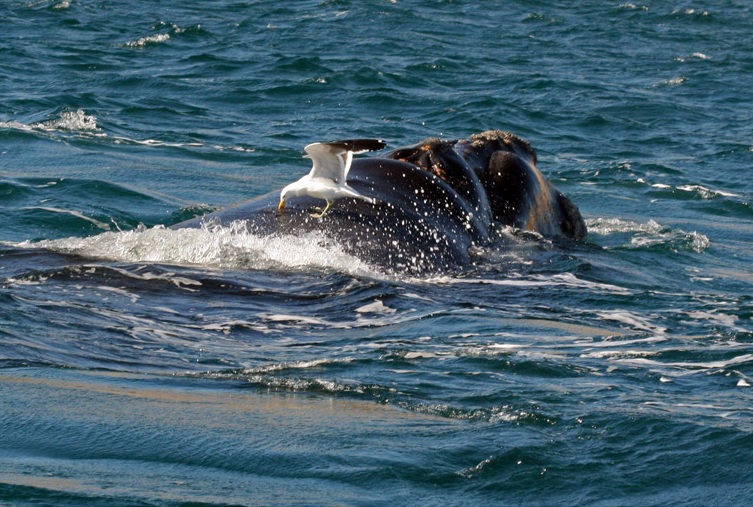Argentina deals with whale-hungry seagulls, work resumes at Brazil’s $13 billion Belo Monte hydroelectric dam, and a 1,200-year-old Mayan theater found in Mexico.
ARGENTINA
A booming gull population in Patagonia is causing strange foraging behavior in the birds. The gulls have been attacking and feeding on southern right whales off the coast of Chubut province in Argentina. Marcelo Bertellotti—a researcher at the National Patagonian Center, a government-funded scientific institute—has proposed shooting the gulls that display this behavior. Other environmentalist groups say the seagull population can be reduced by denying the birds food from open-air garbage dumps and other places.
BOLIVIA
One of Bolivia’s highway projects proposes to bisect Isiboro Secure National Park and disrupt the indigenous Tipnis. Beatriz Zapata Ferrufino, Bolivia’s vice minister of the Environment, says the majority of Bolivian people need integration between the highlands and the lowlands and will support the highway. But ecologists argue the highway’s construction will be a destructive blow to the ecosystem, bringing farming, logging, development and disruption to the Tipnis’ way of life. Noah Friedman-Rudovsky has a video on Yale E360.

BRAZIL
A preliminary ruling from Brazil’s Supreme Court has overturned the suspension of construction of the Belo Monte dam, a $13 billion hydroelectric project across the Xingu river, a tributary of the Amazon river. Work was suspended when a ruling stated that indigenous groups hadn’t been allowed to air their views in Congress. Belo Monte is expected to flood 500 square kilometers and displace tens of thousands of people.
Though deforestation in Brazil’s Amazon has fallen 77% in the last seven years, scientists are having a hard time estimating the effect this decrease has had on carbon emissions. Researchers are using Brazil’s satellite measurements and field and aerial studies to estimate forest biomass, but the reduction in carbon emissions has been lower than expected. One researcher estimates that Brazil’s deforestation-driven carbon emissions have been cut by 17% since 2004–there is a natural lag between carbon decay and carbon dioxide being released into the atmosphere. Some of this research was published last week in the journalGlobal Change Biology.
CHILE
A group of astronomers using the Magellan telescopes in Chile, along with other instruments worldwide, have discovered the Phoenix Cluster, one of the largest and most luminous galaxy clusters in the universe. The researchers have found that the cluster is currently undergoing a burst of star formation that they estimate at 740-solar masses worth of new stars per year. For comparison, our galaxy froms about one star per year, according to the Harvard-Smithsonian Center for Astrophysics, who published a study in Nature on this research.
Chile’s Supreme Court has suspended the $5 billion Castilla thermoelectric project in northern Chile for failing to provide appropriate environmental evaluation reports. The Castilla facility plans to use coal and diesel to produce up to 2,100 Megawatts of electricity. The power plant is a joint venture between Germany’s E.ON and Brazilian Eike Batista’s MPX Energia. MPX will need to redraft environmental impact assessments for all parts of the facility, including the port that will receive coal and petroleum.
MEXICO
Marine turtles that nest on the beaches of Oaxaca state in southern Mexico have been affected by an oil spill that started August 11 in the port of Salina Cruz, reports the environmental group WildCoast. In the last ten days, 24 Olive Ridley (Lepidochelys olivacea) turtles have been found dead on the 14-mile stretch of beach that is their nesting ground, the group says, adding that Mexican state-owned oil company Pemex has not made any efforts to clean up beaches or wildlife following the spill that went “uncontained for 11 days.”
A 1,200-year-old Mayan theater within palace grounds has been found in the southern state of Chiapas, Mexico, according to the country’s National Institute of Anthropology and History (INAH). The theater was used by the Mayan political elite, who relied on histrionics to publicly exercise their power. Arqueologists also found musical instruments and sculptures of gods and prisoners at the site, leading researchers to believe that many captives were forced into humiliation ceremonies and tortured. At a separate site, arqueologists found a 2,000-year-old jaguar sculpture.
